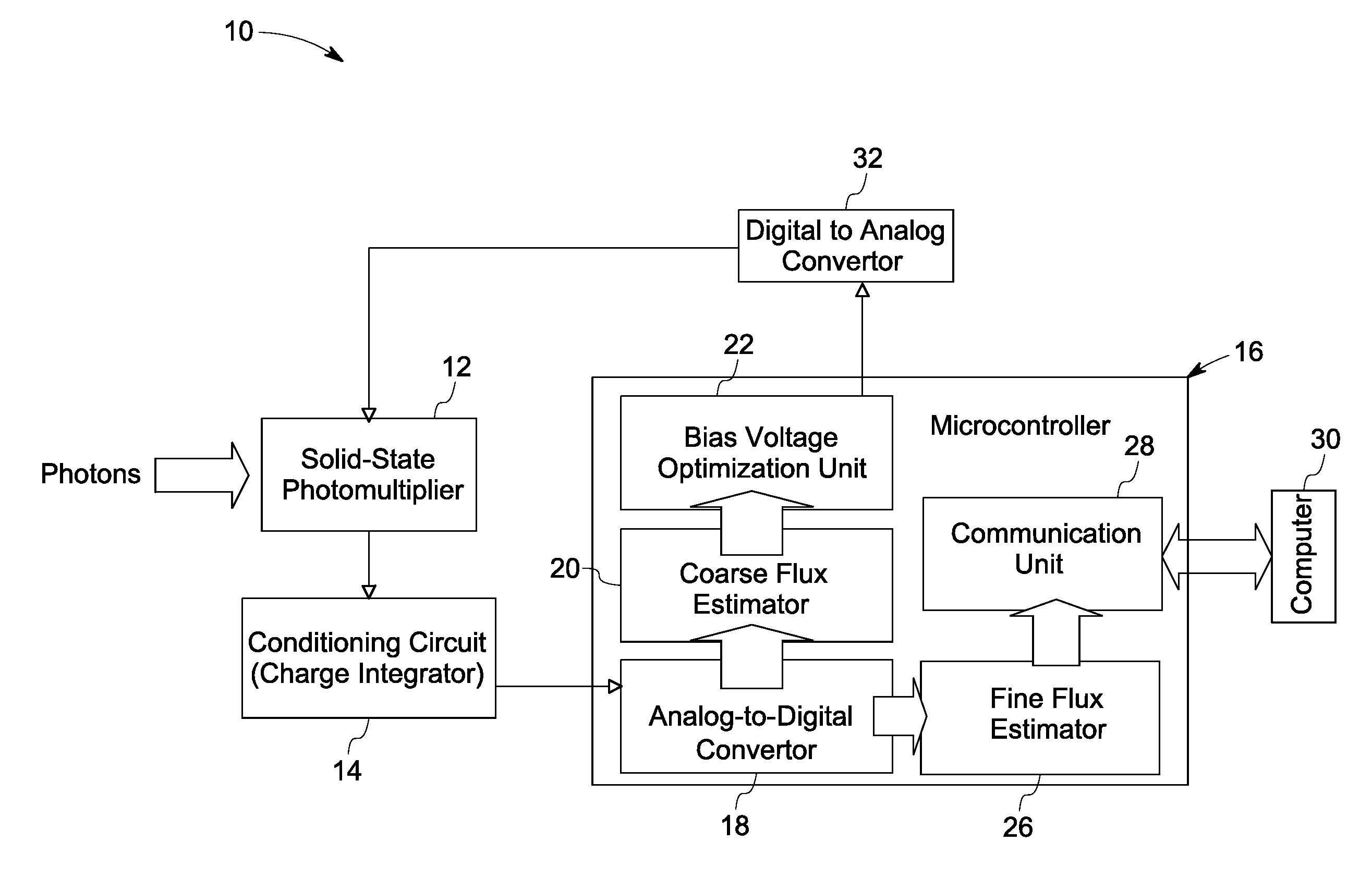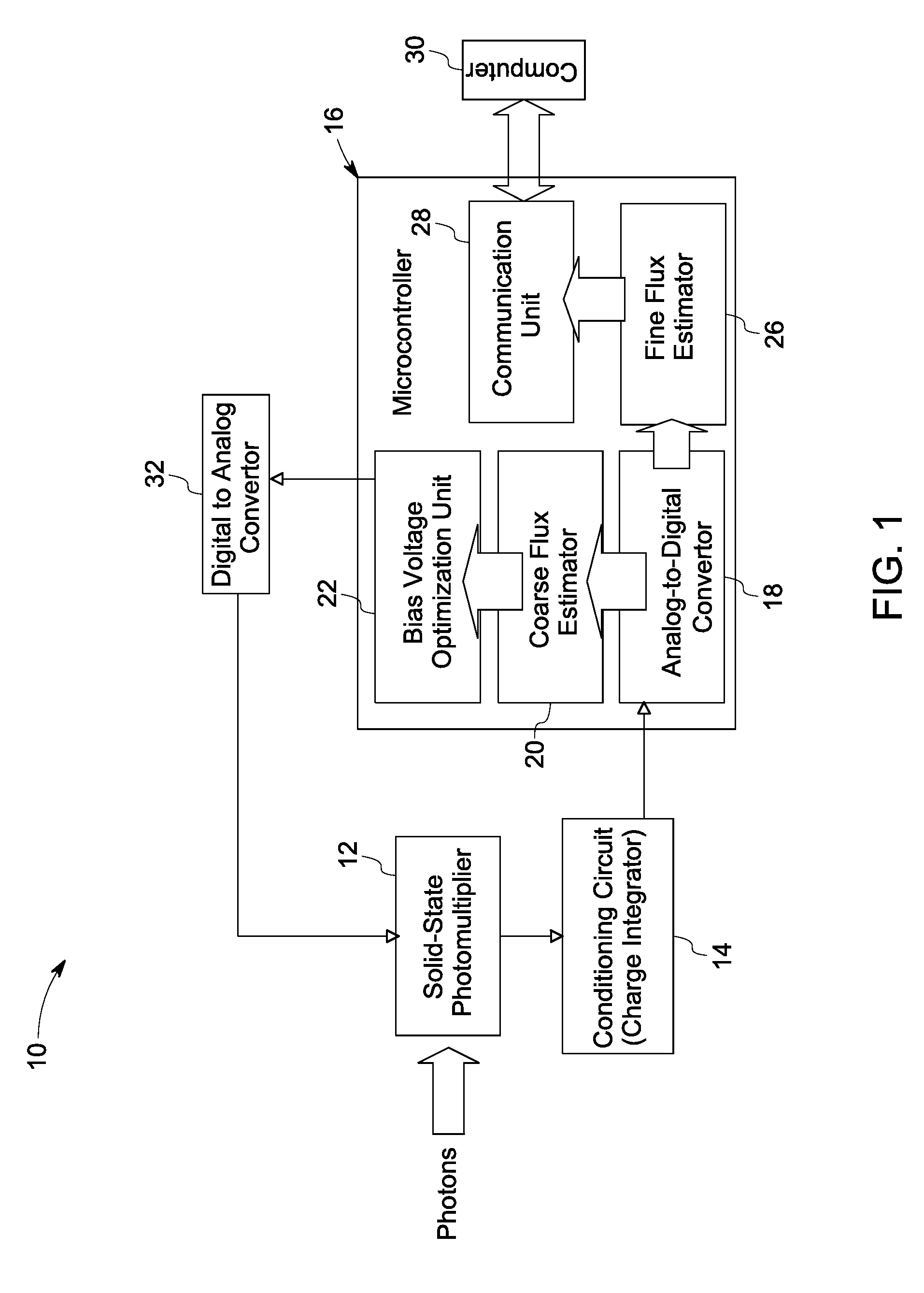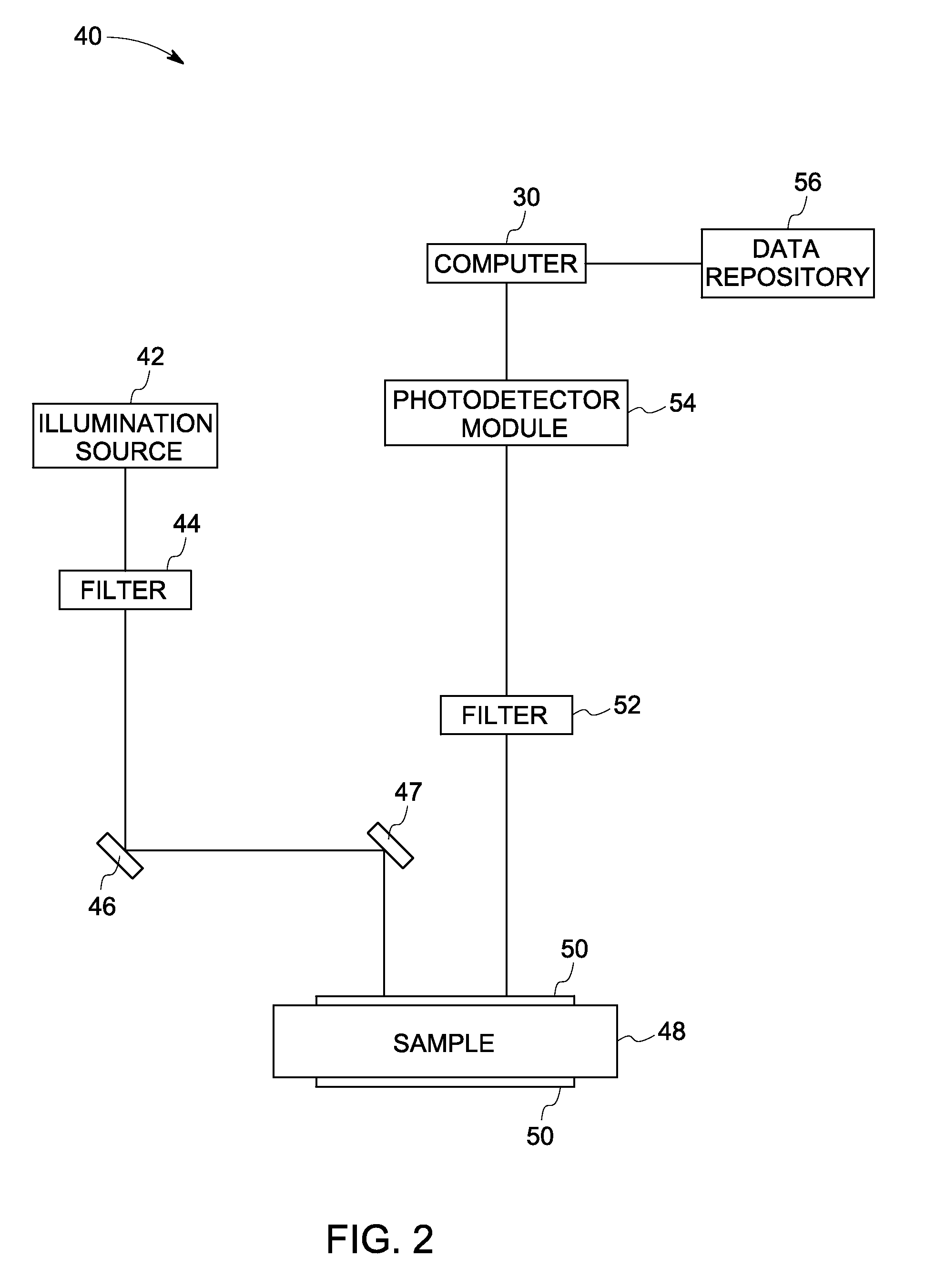Solid-state photomultiplier module with improved signal-to-noise ratio
a solid-state photomultiplier and signal-to-noise ratio technology, applied in the field of solid-state photomultipliers, can solve the problems of limited number of microcells, low detection efficiency of pmts, and low signal-to-noise ratio, and achieve the effect of higher signal-to-noise ratio
- Summary
- Abstract
- Description
- Claims
- Application Information
AI Technical Summary
Benefits of technology
Problems solved by technology
Method used
Image
Examples
Embodiment Construction
[0015]Embodiments of the present invention are generally directed to a solid-state photo multiplier (SSPM) for improving a dynamic range while simultaneously reducing dark count rate. Such embodiments may be generally applicable in scanning imaging systems such as but not limited to Laser gel and blot scanners, confocal microscopes and two-photon microscopes. Further, embodiments of the present technique may also be applied to areas such as cytometry and real-time polymerase chain reaction (PCR).
[0016]Although, embodiments of the present invention are generally directed to SSPMs, it may be noted that the embodiments of the present invention may also be directed to other photodetectors, such as, but not limited to, a photomultiplier tube (PMT).
[0017]In a scanning imaging system, an illumination source emits electromagnetic radiation which strikes an imaging target that includes a substance, such as a fluorophore. The fluorophore in the imaging target is excited by the striking electr...
PUM
 Login to View More
Login to View More Abstract
Description
Claims
Application Information
 Login to View More
Login to View More - R&D
- Intellectual Property
- Life Sciences
- Materials
- Tech Scout
- Unparalleled Data Quality
- Higher Quality Content
- 60% Fewer Hallucinations
Browse by: Latest US Patents, China's latest patents, Technical Efficacy Thesaurus, Application Domain, Technology Topic, Popular Technical Reports.
© 2025 PatSnap. All rights reserved.Legal|Privacy policy|Modern Slavery Act Transparency Statement|Sitemap|About US| Contact US: help@patsnap.com



